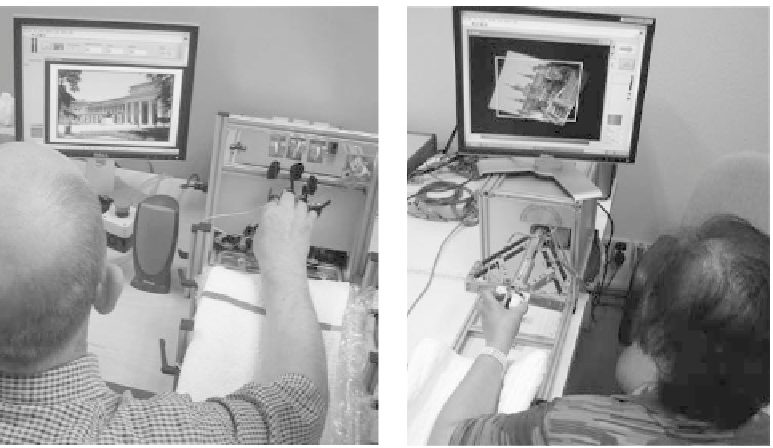Biomedical Engineering Reference
In-Depth Information
A questionnaire given to a population of 27 stroke subjects illustrated that
hand tasks such as handwriting, typing, and operating knobs and buttons are
activities that stroke survivors find difficult and would like to recover most (Dovat
et al.
(2006)). This prompted us to develop robotic devices to train similar
functional tasks. However, such hand activities are complex, require precise
control and/or coordination of the forearm, wrist and fingers and involve a large
number of joints. Further, hand activities also require contribution of the elbow
and shoulder to support the weight and properly position the hand.
A possible approach is to decompose complex hand tasks into a combination
of simple subtasks to be trained individually. For example, the task of operating
a door knob can be decomposed into a series of subtasks (i) reaching for the
knob, (ii) grasping the knob, (iii) turning the knob, and (iv) releasing the knob.
These subtasks can be trained separately with dedicated interfaces and exercises
not yield better results in terms of motor improvement compared to complex tasks
were trained directly (Krebs
et al.
(2008)); however, this presents the advantage of
simplifying both the robot design and the implementation of exercises.
In order to optimize rehabilitation of hand function, patients should be able
to train at home or in decentralized centers, in the context of their daily activities.
Because this would limit transportation costs, be less disruptive to the patient and
require only minimal (or remote) supervision from a therapist, it might allow the
intensity and duration of therapy to be increased without increasing the costs. To
facilitate their acceptance, rehabilitation robots should be designed with a human
centered approach, focusing on stroke patients' needs and desires. They should
Figure 4.1
The
HandCARE
and the
HapticKnob
, two complementary robotic systems for
rehabilitation of hand function.

















